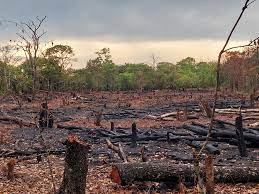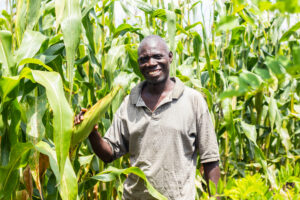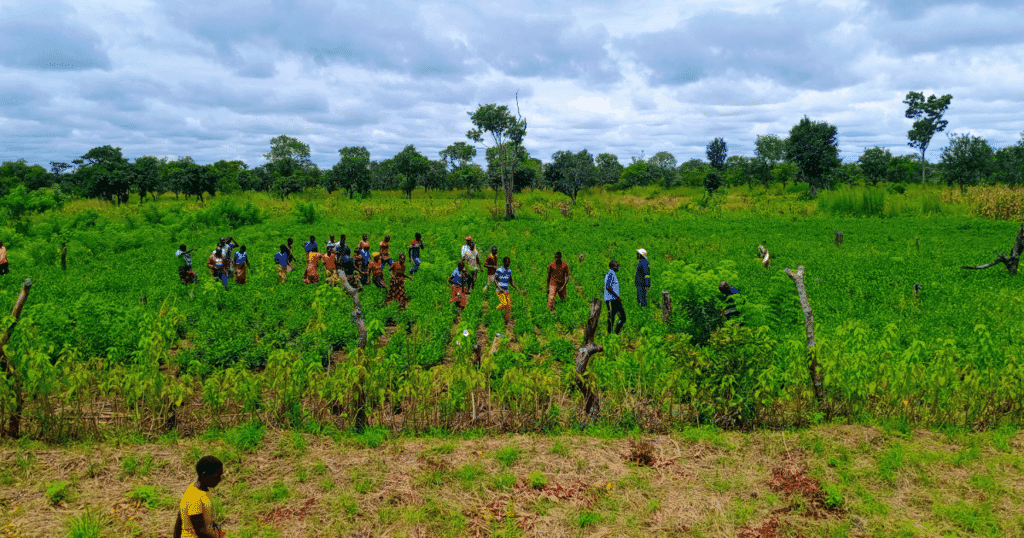The Chitemene system—a traditional form of shifting cultivation practiced across the Miombo woodlands of Northern Zambia—has sustained communities for generations. Rooted in local knowledge and necessity, this slash-and-burn technique once offered a sustainable solution for farming in nutrient-poor soils. Today, however, Chitemene is at a crossroads, challenged by population growth, deforestation, climate change, and the urgent need for more sustainable land management strategies.
As the system faces ecological strain, organizations like BioCarbon Partners (BCP) are working to empower communities with practical, climate-smart alternatives that protect biodiversity while supporting local development goals.
 “Chitemene,” derived from the Bemba word kutema (to cut), involves the selective cutting of branches and small trees from surrounding forested areas. These are dragged into a central plot and burned, creating a nutrient-rich ash bed for crops. Farmers typically plant cassava, millet, or maize, and cultivate the field for 2–3 years before moving on, allowing the area to regenerate.
“Chitemene,” derived from the Bemba word kutema (to cut), involves the selective cutting of branches and small trees from surrounding forested areas. These are dragged into a central plot and burned, creating a nutrient-rich ash bed for crops. Farmers typically plant cassava, millet, or maize, and cultivate the field for 2–3 years before moving on, allowing the area to regenerate.
While once sustainable due to long fallow cycles (20–25 years), Chitemene now contributes to rapid deforestation and soil degradation, as communities shorten fallow periods to meet growing food demands.
Chitemene is not just a farming method—it’s a cultural system that has supported food sovereignty, local governance, and social structure for generations. It allowed rural farmers to produce food with minimal inputs, making it well-suited for remote, low-income communities with limited access to fertilizers, irrigation, or markets.
But as Zambia’s population increases and forests shrink, the pressures on this traditional system have intensified. In regions like Luapula, Northern, and parts of Central Province, once-thriving ecosystems are now under threat.
Today, several overlapping issues are accelerating the decline of the Chitemene system:
Deforestation and Biodiversity Loss:
Chitemene relies on clearing large forest areas, contributing to Zambia’s high deforestation rates, particularly in the biologically rich Miombo woodlands, the world’s largest dry tropical forest ecosystem. Home to iconic species and over 300 million people across eight countries, this landscape has lost nearly one-third of its forest cover between 1980 and 2020.
Soil Degradation and Erosion:
Shortened fallow periods deplete soil nutrients. Combined with heavy rainfall and loss of tree cover, this leads to water runoff, erosion, and declining yields.
Food Insecurity and Monoculture Dependence:
As more farmers shift to maize monoculture for market access, soils are exhausted even faster, and food diversity declines, deepening vulnerability to crop failure.
Policy and Socioeconomic Barriers:
Efforts to ban or restrict Chitemene often lack viable alternatives, forcing farmers to continue unsustainable practices. Many rural households live on less than $1 per day, with limited access to extension services, alternative land, or capital.

At BCP, we believe that conservation and community development must go hand-in-hand. Our work in Zambia’s Miombo region focuses on turning traditional practices like Chitemene into climate-smart, sustainable farming systems that benefit both people and the planet.
Through our REDD+ projects, BCP supports communities in shifting away from slash-and-burn agriculture by offering Climate-Smart Agriculture Training across our project areas. We train farmers in conservation farming, such as mulching, intercropping, and minimum tillage, to reduce soil erosion, improve yields, and build resilience to climate shocks.
For us, success means that investment in a project allows indigenous communities to pursue their own development goals while protecting biodiversity.
Recent research by Sylvera and the World Bank shows that the Miombo woodlands store twice as much carbon as previously estimated. This means that preserving and restoring this ecosystem isn’t just good for biodiversity—it’s vital for climate mitigation. Despite its importance, the Miombo saw a decline in forest cover of almost a third between 1980 and 2020. By transforming Chitemene practices and supporting sustainable alternatives, Zambia has the opportunity to become a global leader in community-based forest restoration.

Addressing the challenges of Chitemene isn’t about abandoning tradition—it’s about evolving it. Through strategic partnerships, targeted investment, and community leadership, Zambia can embrace a future where resilient agriculture supports healthy ecosystems and thriving rural economies.
With initiatives like those led by BCP, we can protect the Miombo woodland; improve rural livelihoods; mitigate climate change; and build lasting environmental stewardship.
The Chitemene system symbolizes both cultural resilience and ecological fragility. As we look toward a greener, more equitable future, supporting farmers in adopting climate-smart, sustainable practices is not just a conservation strategy—it’s a development imperative.
BCP’s approach demonstrates that when local communities lead, landscapes thrive.
Want to learn more about BCP’s work in Zambia or how climate finance is empowering rural communities?
